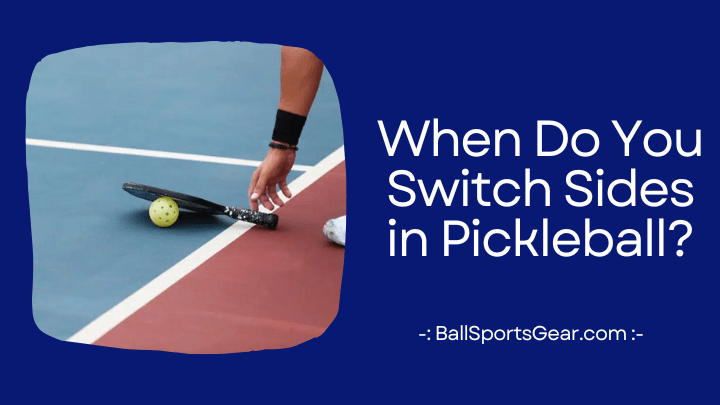Pickleball is a thrilling and quick-paced racquet sport that has experienced tremendous growth recently. When Do You Switch Sides in Pickleball during a match is one query that frequently comes up as players improve their abilities and knowledge of the game. Pickleball players strategically consider numerous elements that may affect games while deciding whether to switch sides, as opposed to arbitrarily doing so.
In this post, we’ll look at the thoughts and variables that go into choosing the right time to swap sides in a pickleball game. Players may improve their performance and adjust to the dynamically changing nature of the game by recognising the significance of side switching.
When Do You Switch Sides in Pickleball?
When deciding when to switch sides in pickleball, several factors come into play. Understanding these factors can help you make informed decisions and adapt your strategy accordingly. Here are the key factors to consider:
- Score Milestones: Switching sides at specific score milestones is a common practice in pickleball. The most commonly used milestones are 6, 8, or 10 points. Switching sides at these intervals ensures that both teams have an equal opportunity to play under varying conditions.
- Serving Rotation: The serving order in pickleball can influence when to switch sides. After scoring a point, the serving team alternates sides. Switching sides strategically allows you to take advantage of favorable conditions during your serving rotation. For example, if the wind is at your back or the sun is not directly in your eyes on one side, it may be beneficial to switch before starting your serving turn.

- Court Conditions: Assessing the current court conditions is crucial. Factors such as wind direction, wind strength, and sun position can significantly affect gameplay. If there is a strong wind blowing consistently from one direction, switching sides can help equalize the impact of the wind on both teams. Similarly, if the sun is causing visibility issues on one side, switching can improve your ability to see the ball clearly.
- Player Preferences and Abilities: Consider the preferences and abilities of both you and your partner. Some players may feel more comfortable or have better skills on a particular side of the court. If one player excels on one side and struggles on the other, it may be advantageous to switch sides to optimize your team’s performance.
- Communication with Partner: Effective communication with your partner is essential in coordinating side switches. Discuss the current conditions, challenges faced on a particular side, and any preferences or concerns you both have. By sharing information and making decisions together, you can make more informed choices regarding side switching.
- Tactical Advantage: Switching sides strategically can provide you with a tactical advantage. For example, if you notice that your opponents struggle with certain shots or court positions on one side, you may choose to switch sides to exploit their weaknesses and gain a competitive edge.
Frequently Asked Questions
A: Switching sides allows players to experience and adapt to different court conditions, such as wind direction and sun position. It helps balance the advantages and disadvantages of each side, ensuring a fair and competitive game.
A: There are no strict rules on when to switch sides, but common guidelines include switching at score milestones (e.g., 6, 8, or 10 points) and during serving rotations. Additionally, consider factors like court conditions, player preferences, and tactical advantages to determine the right time to switch.
A: Even if there are no apparent environmental factors, it is still recommended to switch sides at score milestones or during serving rotations to maintain fairness and equalize opportunities for both teams.
There are no limits on changing sides more frequently, but it’s crucial to strike a balance that doesn’t impair the game’s momentum. Changing sides too frequently might throw off the game’s flow and strategy.
A: Changing sides depends on more than just winning or losing. It’s about upholding justice and adjusting to shifting circumstances. Even if you’re winning, decide if a switch is required by taking into account elements like wind, sun, and player preferences.
Conclusion
When Do You Switch Sides in Pickleball is a strategic decision that can significantly impact the flow and outcome of the game. By considering factors such as score milestones, serving rotation, court conditions, player preferences and abilities, and effective communication with your partner, you can make informed decisions about when to switch sides. Adapting to changing circumstances and leveraging side switches as a tactical advantage will help level the playing field and optimize your performance.
Remember, there are no fixed rules for side switching, and it requires observation, experience, and communication among teammates. As you continue to play and gain more insight into the game, you’ll develop a better sense of when to switch sides in pickleball, enhancing your overall enjoyment and success on the court. So, next time you step onto the pickleball court, keep these factors in mind and make strategic decisions that give you the competitive edge you need.

